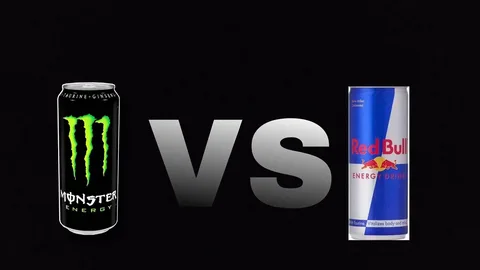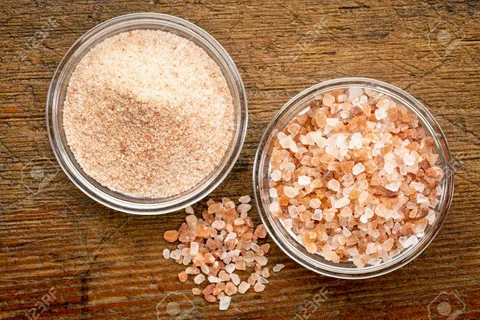Red Bull and Monster are two of the leading brands in the global energy drink market, each boasting a distinct identity, flavor profile, marketing approach, and consumer base. Both brands have successfully captured significant market shares by energizing their audiences, sponsoring extreme sports, and promoting unique lifestyles. This guide explores the differences between Red Bull and Monster, examining their ingredients, nutritional content, flavors, marketing strategies, and overall brand presence.
Brand History and Development
Red Bull
Founded by Dietrich Mateschitz and Chaleo Yoovidhya in 1987, Red Bull has its origins in Thailand. Mateschitz, an Austrian entrepreneur, was inspired by an existing Thai drink called Krating Daeng, which he adapted for the Western market. The slogan “Red Bull gives you wings” reflects its marketing emphasis on energy, performance, and endurance.
Monster
Monster Energy, launched in 2002 by Hansen Natural Company (now Monster Beverage Corporation), is a relatively newer player but has quickly risen to prominence. Monster’s marketing is aggressive and edgy, appealing particularly to the youth and extreme sports enthusiasts. The slogan “Unleash the Beast” underlines its focus on power and high performance.
Product Offerings and Flavors
Red Bull
Red Bull has a more limited range of flavors compared to Monster. Its main products include the original Red Bull Energy Drink, Red Bull Sugarfree, and Red Bull Zero, along with a line of Editions that offer flavors like Tropical, Blueberry, and Watermelon.
Monster
Monster offers a broader variety of products, including the original Monster Energy, Monster Zero Ultra, and a range of sub-lines like Monster Rehab (tea-based energy drinks), Monster Java (coffee and energy blend), and the Juice Monster series with more natural fruit juice contents.
Ingredients and Nutritional Content
Both drinks contain caffeine, taurine, B vitamins, and sugars, though the specific formulations and quantities vary:
Caffeine
Red Bull contains about 80 mg of caffeine per 8.4-ounce can, similar to a cup of coffee. Monster, on the other hand, typically contains around 160 mg per 16-ounce can, making it a stronger option in terms of caffeine content.
Sugars
Red Bull’s original flavor contains 27 grams of sugar per 8.4 ounces, whereas Monster’s equivalent contains approximately 54 grams of sugar per 16 ounces.
Calories
Red Bull offers about 110 calories per can, while Monster delivers around 230 calories in a 16-ounce can.
Marketing Strategies
Red Bull
Red Bull’s marketing strategy focuses heavily on association with extreme sports, adventure, and endurance activities. It sponsors athletes, hosts events like the Red Bull Air Race and Red Bull Rampage, and owns multiple sports teams, including F1 racing teams.
Monster
Monster Energy aligns itself with motorsports, punk rock music, and action sports. It sponsors significant events and personalities in the realms of motocross, mixed martial arts, BMX, and snowboarding.
Target Audience
Red Bull
Red Bull targets young professionals, students, and athletes who need a boost in concentration and endurance. Its marketing campaigns are tailored to convey vitality, creativity, and high performance.
Monster
With its louder and more rebellious branding, Monster appeals to a younger demographic that is heavily influenced by extreme sports culture and music scenes. Its customers are typically younger than those of Red Bull.
Global Reach and Sales
Red Bull enjoys a more extensive global presence, distributed in over 170 countries. Monster, while also internationally available, has a stronger market presence in the United States. In terms of sales volumes, Red Bull often leads with more than 6 billion cans sold annually compared to Monster’s reported figures.
Price and Availability
Both brands are competitively priced, often found side by side in stores. Red Bull can be more expensive per ounce, reflecting its positioning as a premium product. Monster usually offers a better value proposition due to its larger size.
FAQs
Which drink offers more energy?
While both drinks provide a significant energy boost, Monster contains more caffeine per can, which may offer a more intense energy surge compared to Red Bull.
Which is healthier?
Both drinks contain high levels of caffeine and sugar, which can be detrimental if consumed excessively. Red Bull’s smaller can size results in lower absolute caffeine and sugar intake.
Are there any healthier alternatives within each brand?
Yes, both brands offer sugar-free and calorie-reduced options. Red Bull has its Sugarfree and Zero versions, and Monster offers the Zero Ultra series among others.
How do I choose between Red Bull and Monster?
Your choice may depend on your taste preference, desired caffeine level, and brand affinity. Consider trying different flavors and formulations from each brand to determine your preference.
Can these drinks be consumed daily?
Due to their high caffeine and sugar contents, it is advisable to consume these drinks in moderation. They are not recommended for daily consumption, especially for young children, pregnant women, or individuals sensitive to caffeine.
How do the two brands impact the environment?
Both brands have faced criticism for environmental impacts, particularly in terms of packaging waste and energy usage in production. Red Bull and Monster are taking steps towards sustainability, but this remains an area for improvement.
Do these drinks actually improve athletic performance?
While both drinks can increase alertness and improve concentration, they should not be considered a substitute for proper athletic training and nutrition. The boost they provide can be beneficial in short bursts of intense activity but should be integrated into a balanced lifestyle.
- Xela Rederm Skin Booster Treatments Near Weybridge, Surrey - January 12, 2025
- Traptox Aka Trapezius Botox Treatment Near Gatton, Surrey - January 10, 2025
- Skin Injectables Near Shamley Green, Surrey - January 7, 2025




